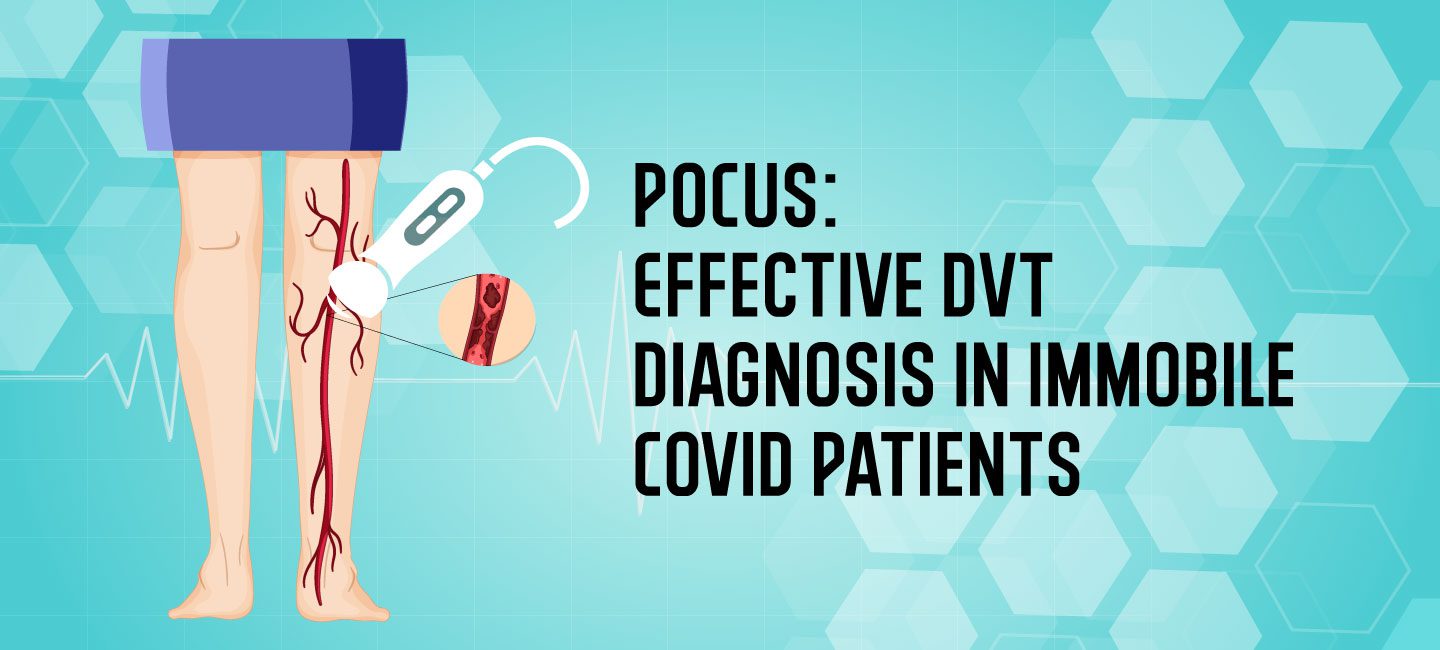Nurse Jane D. began her morning shift in the ICU like many other days. Her first stop on her morning rounds was Bob, a patient recently admitted to the ICU due to COVID-19. Bob was conscious but on a ventilator to augment his breathing. As Jane assessed Bob, she noted that his left leg was red, swollen, and hot to the touch. Bob communicated that his leg was in a great deal of pain. After speaking with Dr. Ready, a point-of-care ultrasound (POCUS) order was placed for Bob’s leg.
Results from the POCUS evaluation indicated deep vein thrombosis (DVT). Bob was treated with anticoagulants (blood thinner). He eventually recovered from COVID and was released from the hospital. His doctors continue to monitor Bob to ensure his anticoagulant treatment prevents new blood clots from forming.
This case is a fictional scenario but a potentially true-life example of how point-of-care ultrasound can help patients with limited mobility who present signs and symptoms of DVT.
The Center for Disease Control (CDC) defines deep vein thrombosis “as a medical condition that occurs when a blood clot (thrombus) forms in one or more of the deep veins in the body.” Although DVT can happen in any part of the body, it usually can be found in the leg, thigh, or pelvis. A DVT blood clot could break free, move through your bloodstream, and get lodged in a lung vessel when left untreated. The clot blocks blood flow to the lungs causing a more severe condition called pulmonary embolism (PE). Pulmonary embolism can be fatal if measures aren’t quickly taken to treat it. For these reasons, it is vital to use POCUS to diagnose DVT promptly.

It is crucial to recognize the signs and symptoms of DVT and to know when to utilize POCUS to confirm the condition.
Symptoms include:
- Swelling, pain, and tenderness in the affected leg
- Severe cramping or soreness that won’t go away
- Discomfort that makes it difficult to walk or stand
- Red or discolored skin on the leg
- A feeling of warmth in the affected area
It is important to know the difference between a leg cramp and DVT. Leg cramps usually start abruptly, feel intense, but go away. DVT symptoms can be mild initially and progressively worsen over days. Your chances of getting DVT increases when you:
- Are pregnant
- Use hormone replacement medication or birth control pills
- Sit for extended periods (for instance, sitting during long drives or flights)
- Prolonged bed rest
- Have a family or personal history of DVT
Many benefits come with using POCUS, including speed for critical diagnosis, cost-effectiveness, and portability. POCUS is potentially life-saving for patients visiting student health centers on college campuses or those treated in rural areas with limited access to major medical centers.
POCUS, DVT, and COVID
Ventilators, monitors, and the spread of disease can make patients immobile due to the nature of their illness. It is not uncommon to use point-of-care ultrasound during extended hospital stays.
An abstract in NIH Pub Med.gov noted the following regarding POCUS, DVT, and COVID patients:
Point-of-care ultrasound (POCUS), a clinician performed and clinician interpreted bedside ultrasound examination, has been increasingly used for DVT evaluation mainly in the urgent and critical care setting, but also in the ambulatory clinics and the medical wards. Studies have demonstrated that POCUS has excellent diagnostic accuracy for acute proximal DVT when performed by well-trained users.
An additional study reported in The Thrombosis Journal concluded:
ICU residents with no or limited experience could detect DVT with ultrasound in critically ill COVID-19 patients following a short education.
As we continue to navigate the COVID global pandemic, POCUS education will be vital to caring for patients and improving outcomes. Visit the POCUS education provider program to learn more about how you can start training.





















